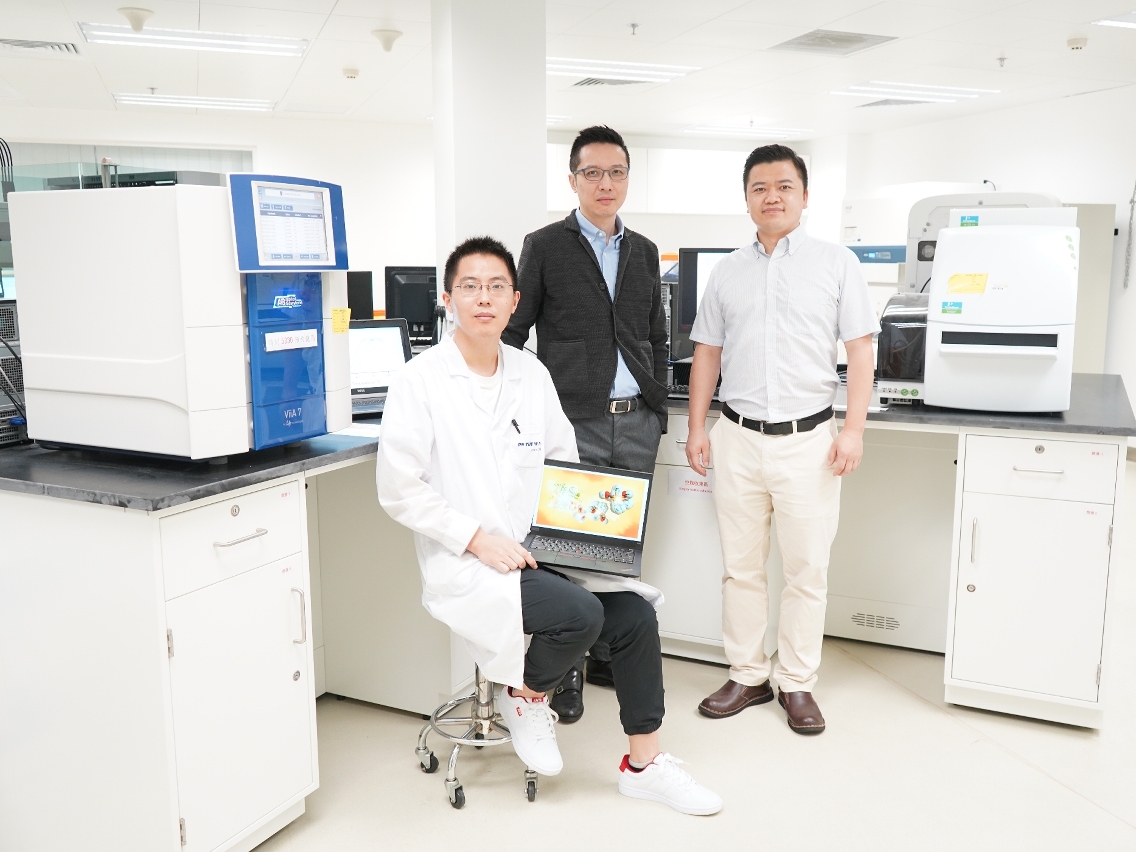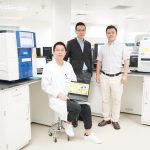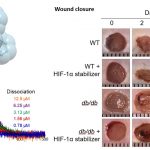 (From left) Li Guodong, Leung Chung Hang, and Lin Ligen
(From left) Li Guodong, Leung Chung Hang, and Lin Ligen
Research teams led by Professor Leung Chung Hang and Associate Professor Lin Ligen at the Institute of Chinese Medical Sciences (ICMS), University of Macau (UM), together with a research team led by Associate Professor Ma Dik Lung in the Department of Chemistry, Hong Kong Baptist University (HKBU), have successfully designed and synthesised a new stabiliser, which can significantly accelerate diabetic wound closure and has great potential to be developed as a drug for the treatment of diabetic foot. The study has been published in the internationally renowned journal Nature Communications.
Diabetic foot ulcer (DFU) is one of the most common complications of diabetes mellitus that can lead to amputation or even death in extreme cases. Nearly 4 million people are diagnosed with DFU globally every year. To date, several treatment strategies for diabetic wounds are available, including regular debridement, surgical revascularisation, and infection therapy. However, owing to the limitations of existing methods, new drugs for the treatment of diabetic wound healing in clinical practice are desperately needed. Wound healing is a complex and dynamic process involving epithelialisation, angiogenesis, granulation tissue formation, and wound contraction, all of which are regulated by HIF-1α. In normal tissues, HIF-1α steady-state levels are low due to oxygen-dependent hydroxylation of HIF-1α. However, hyperglycemia in diabetes can decrease the stability of HIF-1α, leading to the inhibition of HIF-1α target gene expression, which could account for incidences of poor healing and ulcer complications in diabetic patients. The research teams have synthesised a library of cyclometalated iridium(III) metal complexes with diverse structures, and discovered a potent complex that specifically targets VHL, leading to the accumulation of HIF-1α levels and the activation of HIF-1α transcriptional activity. In addition, in three different animal models of diabetes, thiscomplexdramatically increased skin blood flow rate and angiogenesis in the wound areas in order to enhance wound healing.
This study not only identified a new small molecule stabiliser of HIF-1α as a promising therapeutic agent for wound healing, but also validates the feasibility of treating diabetic wounds by blocking the VHL and HIF-1α interaction, thereby providing a new avenue for improving the quality of life of DFU patients. The project was funded by the Science and Technology Development Fund, Macao SAR (File no. 0072/2018/A2 and 0031/2019/A1) and University of Macau (File no. MYRG2019-00002-ICMS, MYRG2018-00037-ICMS and MYRG2018-00187-ICMS). The research paper is available at: https://www.nature.com/articles/s41467-021-23448-7.



